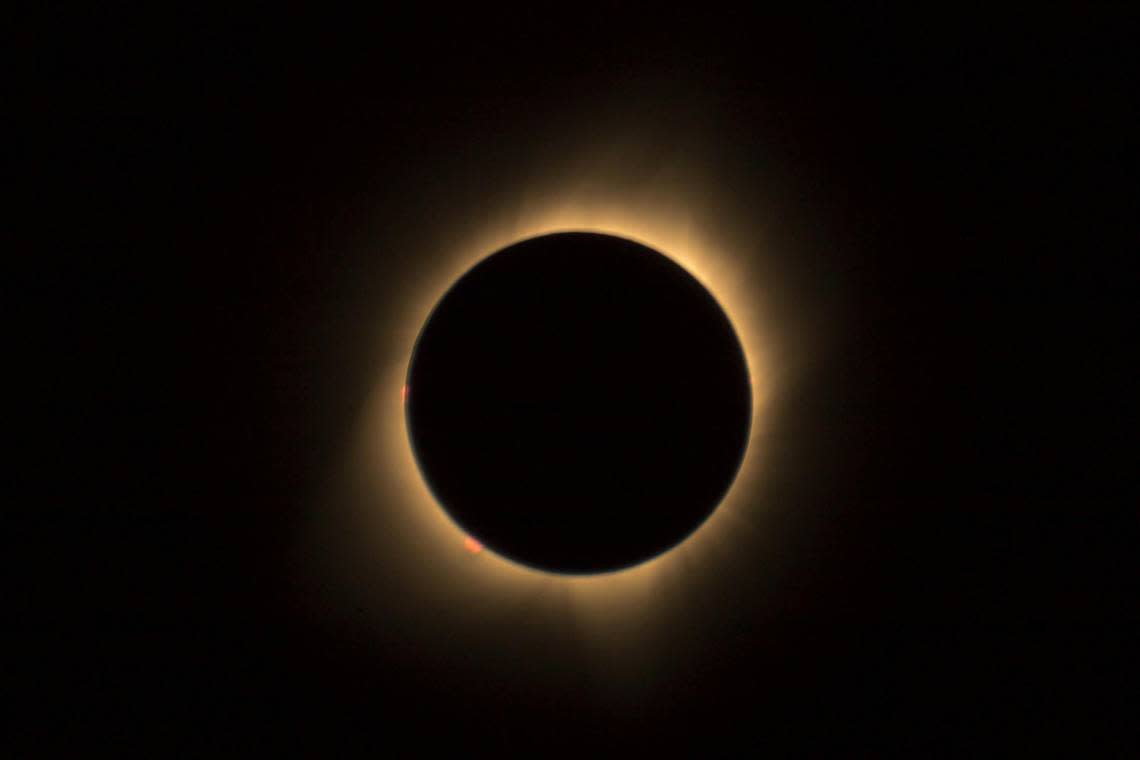When will the total solar eclipse be visible in MS? Your guide to timing, path & more

April showers bring total solar eclipses?
Well, that’s not true, but there is a total solar eclipse coming in April 2024.
Here’s what to know about the rare spectacle that won’t happen again until 2044.
When is the total solar eclipse coming?
On April 8, 2024, a total solar eclipse will stretch across the U.S. and will be visible in multiple states.
The last total solar eclipse was in August 2017 and according to NASA, the next one won’t be seen again in the United States until 2044.
What is a total solar eclipse?
According to NASA, a total solar eclipse happens when the moon passes in between the sun and Earth, which blocks the face of the sun.
For places in the path of totality where the total solar eclipse can be fully seen, the sky will darken in the middle of the day and it’ll look like it’s dusk or very early dawn outside.
When will it be seen in Mississippi?
All together, the eclipse will be fully visible anywhere from one to four minutes in the U.S., but it depends on your specific location for the timing during the day. According to NASA, Mexico will be able to see the eclipse for a little more than four minutes.
The interactive map by National Solar Observatory (NSO) shows the exact path of the total solar eclipse and in Biloxi, the eclipse will be visible partially (80.16%) at 12:32 p.m. with a maximum viewing experience at 1:52 p.m.
NSO is reporting that on the Mississippi Coast, the view will look like the sun has a big chunk out of it, but the sky will still be bright.
On the Mississippi Coast, the eclipse will be a partial solar eclipse ranging between 81.54% in Diamondhead to 79.51% in Moss Point and NSO experts say that “some may not notice.”
The total duration of the eclipse experience in Mississippi will be around two hours and 38 minutes.
More about the path
The NSO interactive map also shows the path of totality that stretches from Mexico to the United States.
Specifically, the eclipse will enter the U.S. in Texas and travel through Oklahoma, Arkansas, Missouri, Illinois, Kentucky, Indiana, Ohio, Pennsylvania, New York, Vermont, New Hampshire and Maine.
The eclipse will end in Canada, with it coming through Southern Ontario, Quebec, New Brunswick, Prince Edward Island and Nova Scotia.
Are you excited about the total solar eclipse? Comment below or email me at cmadden@mcclatchy.com

